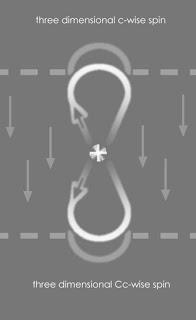 we've all done it, we've all tried to remember something, then someone has taken us (mentally or physically) back to the place where we used to know that thing and BANG there is the memory. Does this really suggest that 'memory is geo-related'? I ask this because I'm back from my Xmas family holiday in France and once again I've been tempted down the path of this illusive 'subatomic vortex in space' I've dubbed the HC (or Hertzan Chimera) Unit.
we've all done it, we've all tried to remember something, then someone has taken us (mentally or physically) back to the place where we used to know that thing and BANG there is the memory. Does this really suggest that 'memory is geo-related'? I ask this because I'm back from my Xmas family holiday in France and once again I've been tempted down the path of this illusive 'subatomic vortex in space' I've dubbed the HC (or Hertzan Chimera) Unit."Easy as one, two, three!" thus sang Michael of the Jackson Five. You'll understand what I mean when you see how these atoms grow.
So, I went back to basics. I thought, "The HC Unit is a four-phase spacetime generator that passes through + then 0 then - then 0 and round again, creating clockwise then anticlockwise 'spin' of the 'ether' as it does." The 0 phase is a 'neutronic' state where the single HC Unit (atomic hydrogen) is yet to excess to either the + (clockwise spin) or - (anti-clockwise spin) state.
I linked four of these HC Units up in a circle to form the first Nobel Gas, i.e. Helium. You'll see that Helium has a +- valency similar to the 2s i.e. first full electron shell. I converted this HC4 into a square. Note: this 'virtual helium' lives at the center of the larger atoms; as do 'virtual neon' and 'virtual argon' in the later metals and such.
This also gave clues as to how the larger Nobel gases could 'grow' or 'be formed'.

Now, that's very confusing, isn't it. But I'll show you how I came about this concept; PYRAMIDS. HC4 is my equivalent of Helium i.e. four HC Units rotating ninety degrees out of phase to create a totally no-net-charge 'circle', as are all atoms - circles of HC Units feeding the loop.
I took this HC4 'square' i.e. Nobel Gas structure, and sliced it down through space, adding one square each time to get this image:
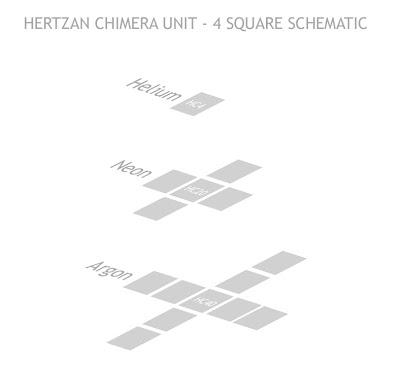
Except that it's TOTALLY WRONG, and I'll tell you why.
The first four Nobel Gases i.e. Helium, Neon, Argon and Krypton, have atomic numbers 4, 20, 40 and 84 respectively. If you look at my simple Argon (HC40 above) you'll see that it actually totals up to HC36 i.e. one few 'square' -- HC40 needs (obviously) TEN squares to contain the protons and neutrons of Argon, i.e. 40. So, how to cure this, and what does it mean for the later atoms and how such might grow?
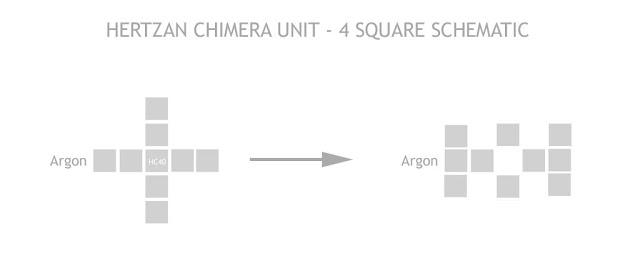
This is the way HC40 (i.e. Argon) has to look to fit the data - that is to say, "The adding of further 'squares' to the Neon 5-square model means the central 'virtual Helium' square gets kicked out during the additions." Now, for some (colourful) shorthand.
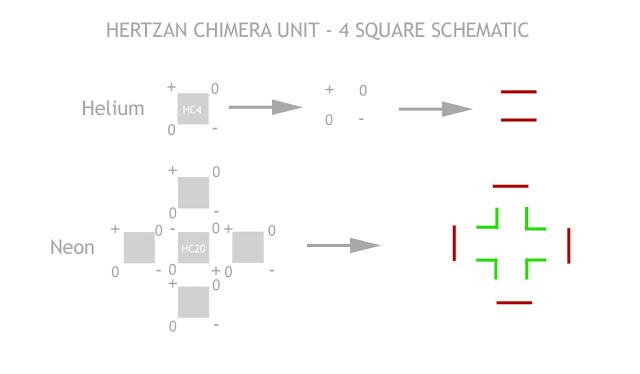 As, you'll see, a single (excessing) Hertzan Chimera Unit attracts another to it, these link together in +0 0+ -0 and 0- cycling pairs, shown in red above. This is actually the basis for how atoms grow. But there's another trick ... the HC Units MUST NEVER achieve the HC4 arrangement because that is a Nobel i.e. no net charge, state.
As, you'll see, a single (excessing) Hertzan Chimera Unit attracts another to it, these link together in +0 0+ -0 and 0- cycling pairs, shown in red above. This is actually the basis for how atoms grow. But there's another trick ... the HC Units MUST NEVER achieve the HC4 arrangement because that is a Nobel i.e. no net charge, state.The key to atomic growth (within the furnace of the Sun, surely) is the HC3 model, where the red HC2 is added to, to make the interatomic HC3 that links together in cycling triples +0- 0+0 -0+ and 0-0 (in green above). In fact, I found, the easiest way to GROW an atom is to 'add a square'. This allows a new HC2 to fit in and then to become a HC3. Look at how we can grow an atom usingn this concept...
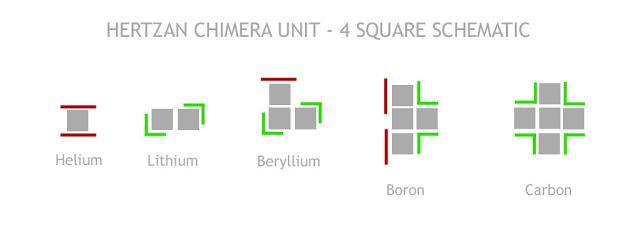
Carbon, as you'll see from the following valency model is ready to accept FOUR PAIRS OF HC2's in electronic formation. The square at the center of a Carbon atom is actually a 'virtual helium' i.e. a HC4 formed by pulling in the 'four corners' of the HC12's 'circle' of HC Units to make a cross shape. Very stable, with real valent potential. It's easy to see how Carbon can accept four more red-line HC pairs to form Neon, or have four extra valencies attached to form Carbon Compounds like Methane i.e. CH4.
Remembering the weird ten square formation i.e. HC40 (Argon), it's interesting to note how the following atoms, Potassium and Calcium also have a 40 HC Unit total. But look at what happens after Scandium i.e. WE HIT SOLID METALS for the first time in the Periodic Table.
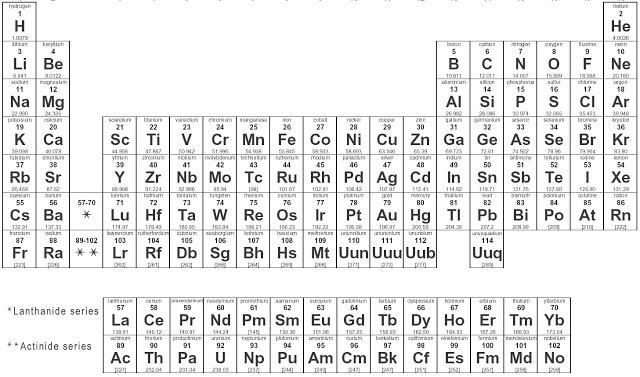
Funny thing is, "I don't even know if this strange Hertzan Chimera Unit theory relates to the electron shells i.e. the number of protons, or their underlying quarks also acting in threes i.e. one up two down = neutron and two up one down = proton. It's probably a theory that's suffering from having to justify itself against contemporary empirical data, but it HAS TO. All theories need to start in THE REAL WORLD and then be able to predict what happens when they're applied to real elements.
We'll see where the Hertzan Chimera Unit theory goes in the coming decades. Me, I'm just showing the physically observed data in a different form than is normally used by MSA or Modern Scientific Agreement.

